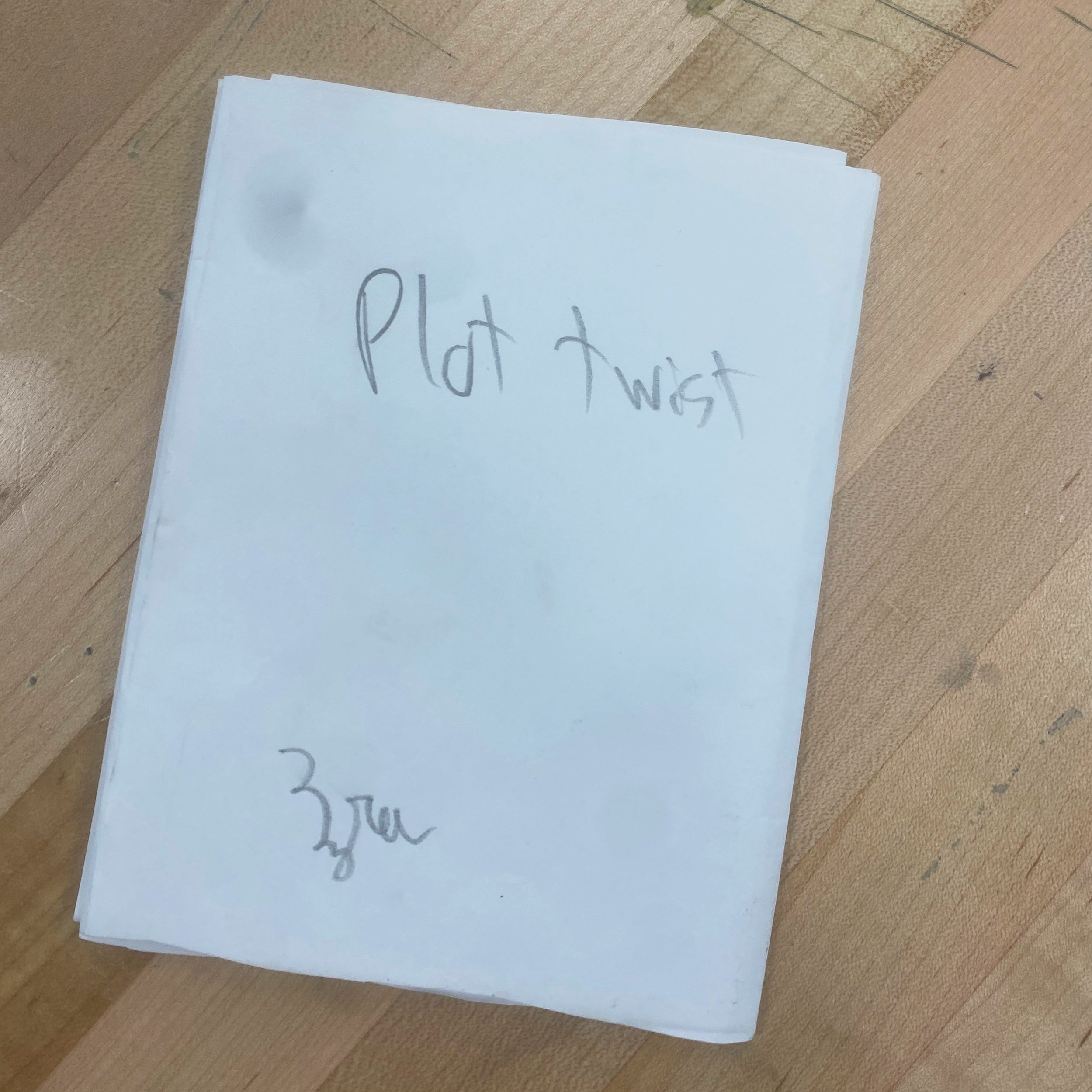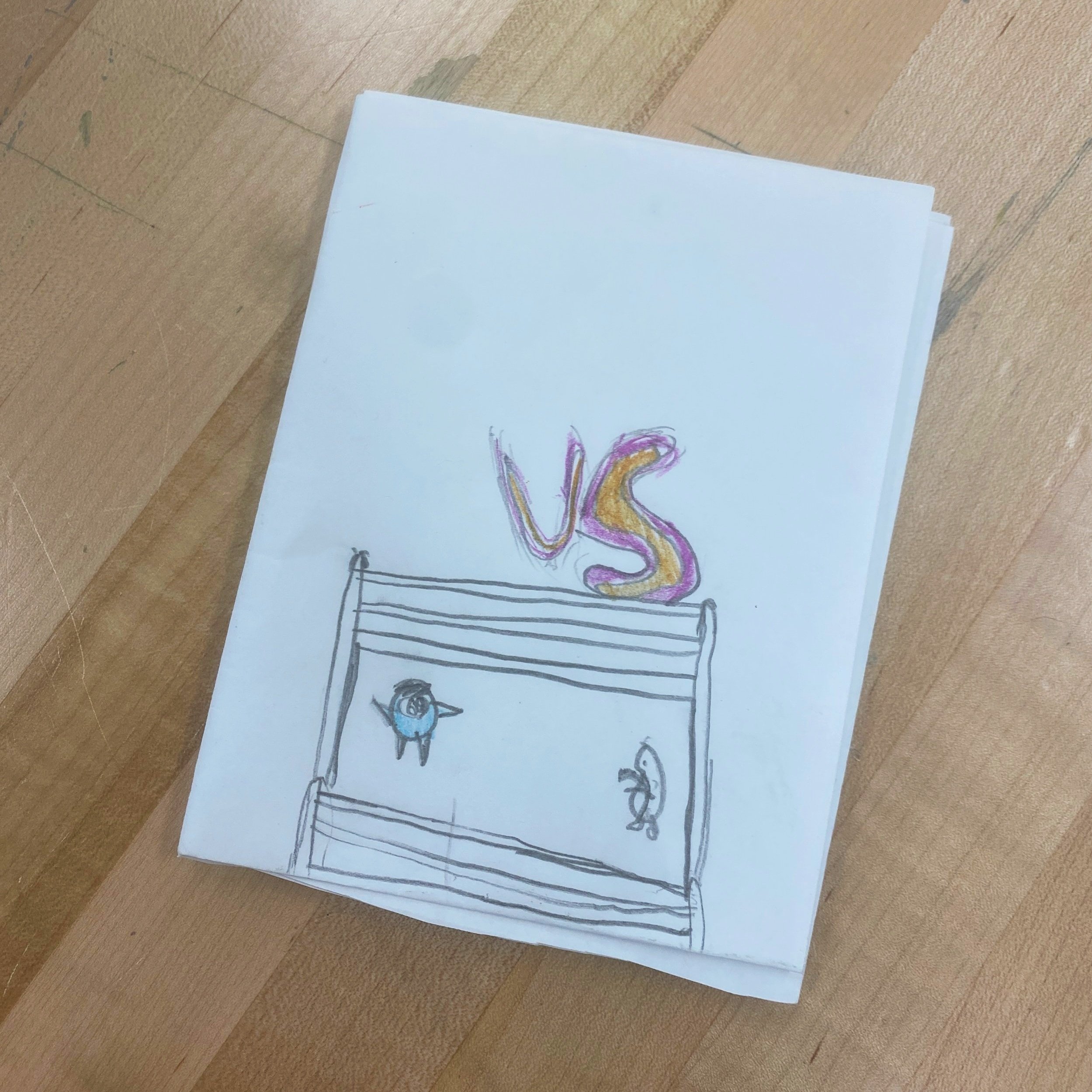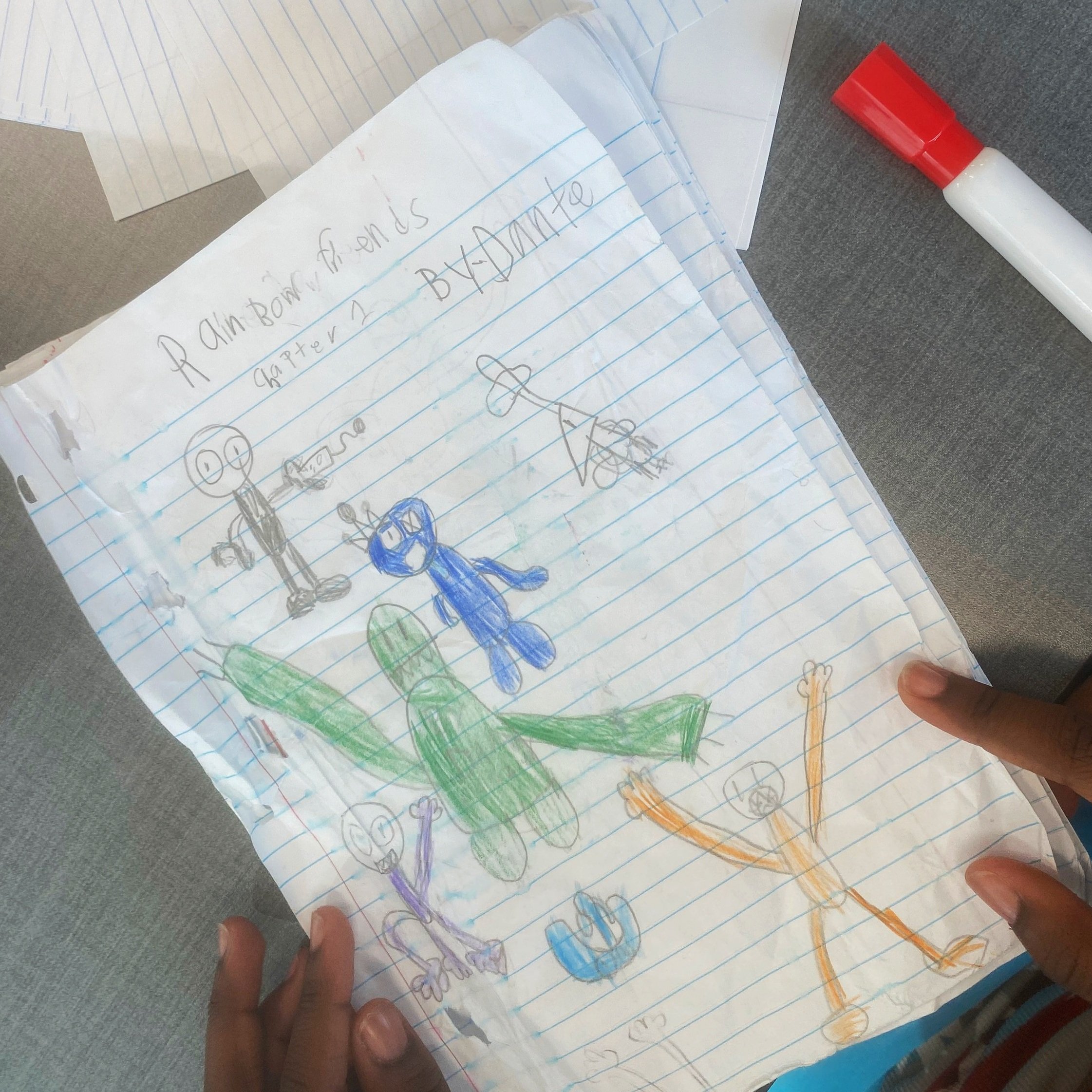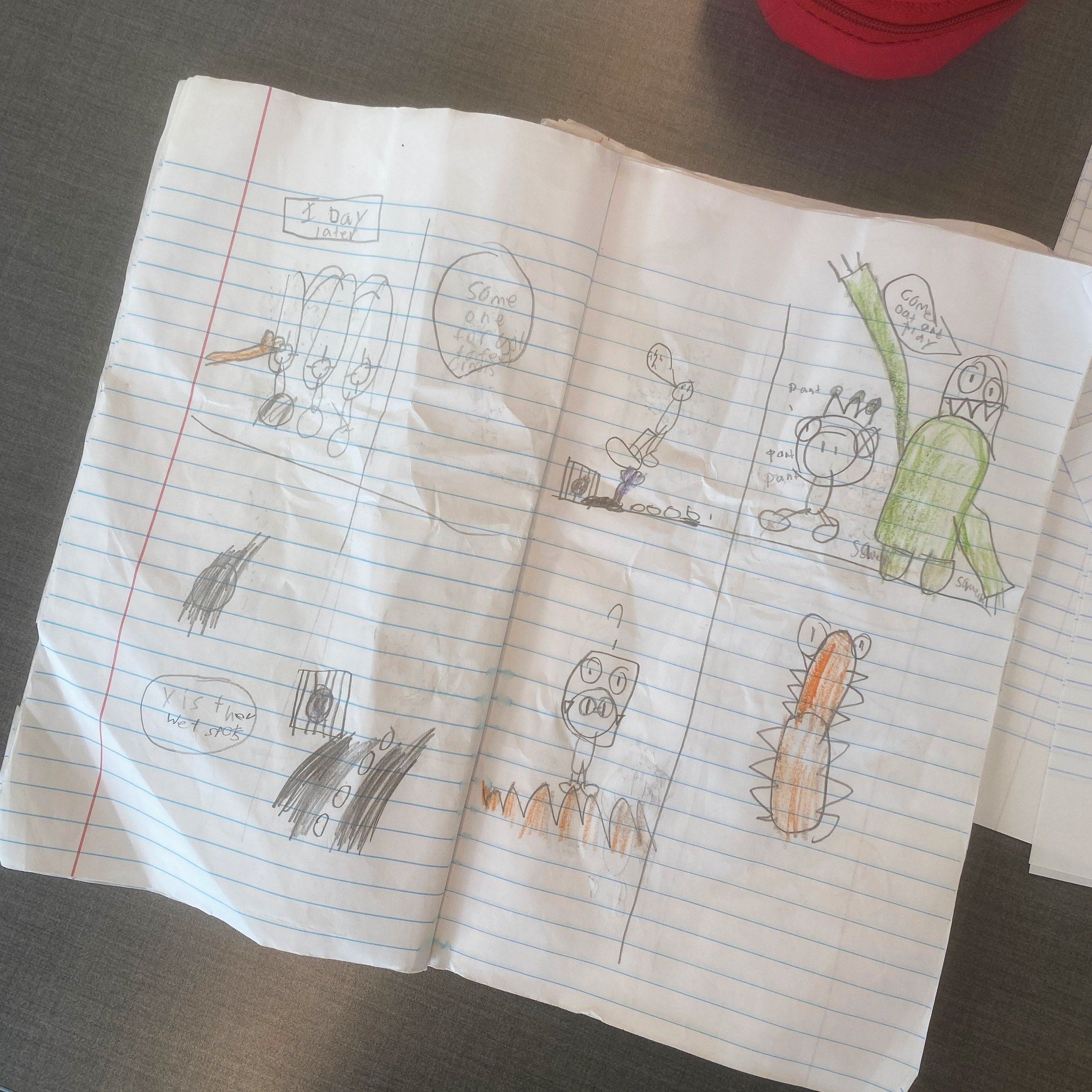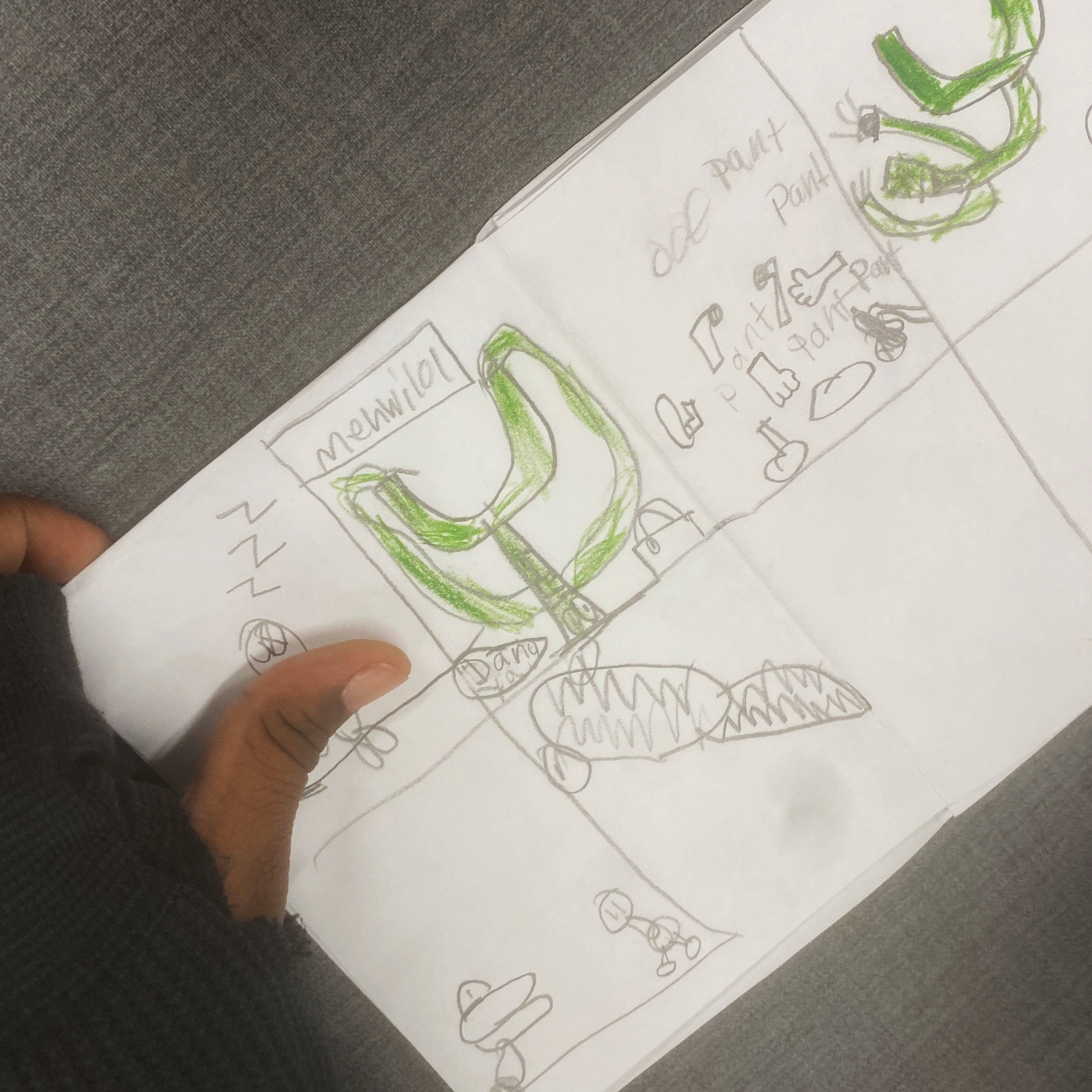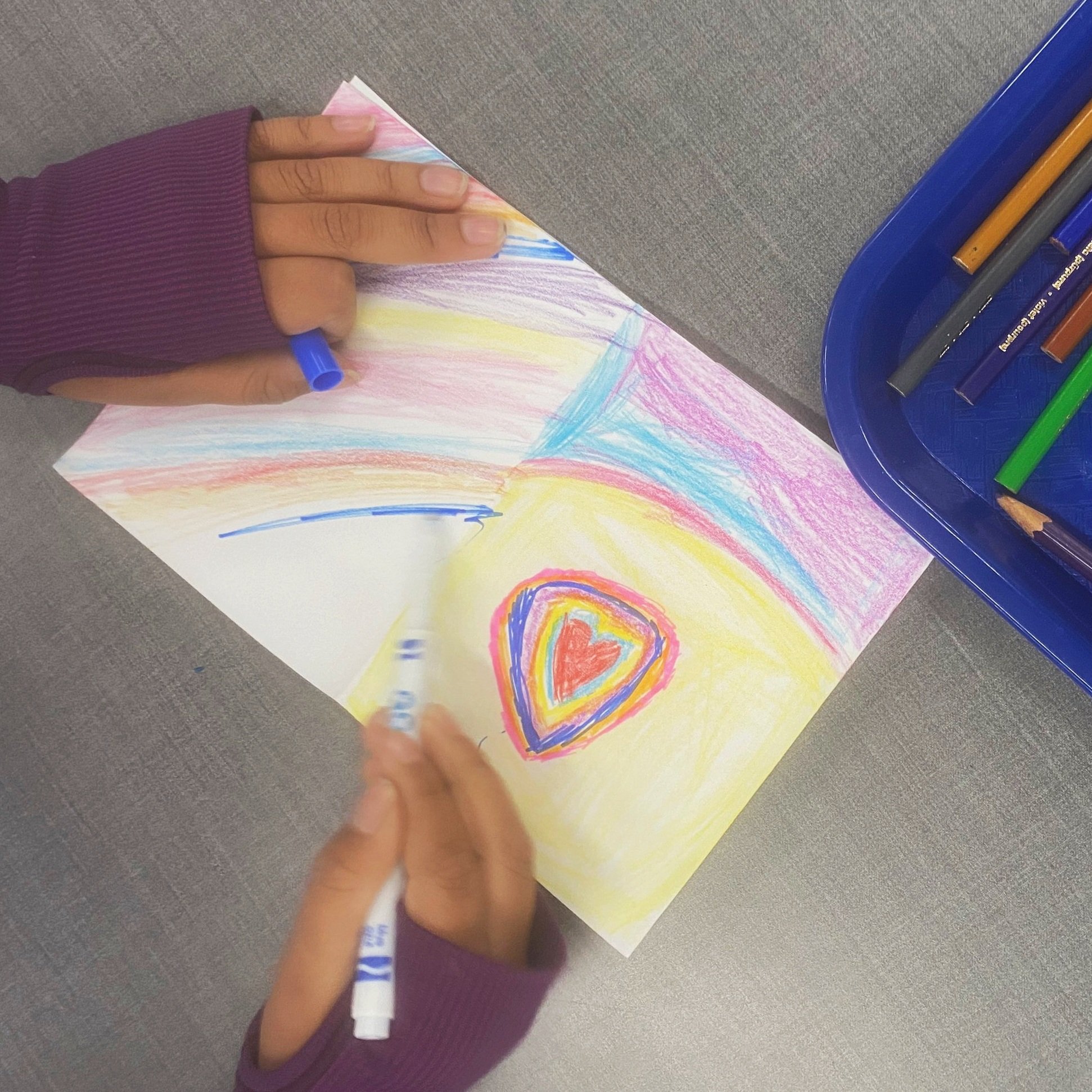MAKE A ZINE
Students will understand the basics of storytelling through the creation of a zine, utilizing visual and written elements to convey a narrative.
Materials
Tabloid paper (11x17)
Markers, Colored pencils, and Pencils
Scissors
Visual references of zines and storytelling examples
Lesson Outline
Introduction (15 minutes):
1. Define what a zine is and its historical context as a self-published, small-circulation publication.
2. Discuss the power of storytelling in conveying emotions, experiences, and ideas.
3. Show examples of zines that effectively combine visuals and storytelling.
4. Introduce key elements of storytelling: characters, setting, plot, conflict, and resolution.
5. Discuss narrative structure, including the beginning, middle, and end.
Zine Structure and Format (10 minutes):
1. Explain the format of a zine (folding a single sheet of paper into a small booklet) and its potential pages.
2. Discuss how visual elements can enhance storytelling in a zine, such as illustrations, collages, and handwritten text.
3. Provide examples of different zine layouts and formats for inspiration.
Hands-On Activity (20 minutes):
1. Instruct students to brainstorm and outline a short story or personal narrative they want to convey in their zine.
2. Guide them in creating a draft of their zine, emphasizing the use of both images and text to tell their story.
3. Encourage experimentation with different materials and styles to enhance visual storytelling.
4. Once the drafts are complete, allow time for revisions and improvements.
Sharing and Appreciation (10 minutes):
1. Have students share their zines with the class, explaining the narrative and artistic choices they made.
2. Summarize the key points about storytelling and zine creation.
3. Ask students to reflect on the challenges and joys of combining visual and written elements in their zine.
Assessment:
Evaluate students based on their understanding of storytelling elements, creativity in zine composition, and effective use of visuals to convey a narrative. This lesson aims to empower students to explore storytelling in a creative and accessible format, fostering self-expression and artistic storytelling through the medium of zines.
The majority of 1st-grade students faced challenges in conceptualizing concrete and step-by-step stories and expressing them through drawings or writing. They tended to focus on using pictures to represent characters and key words. Further support and guidance may be needed to help them develop more structured narratives.
On the other hand, 3rd to 5th-grade students demonstrated a more advanced understanding of storytelling elements. They showcased well-developed characters with depth, and their narratives flowed naturally. One student, in particular, exhibited a strong affinity for creating stories and comics, effectively utilizing the zine format to unfold a plot seamlessly. This student's ability to create a cohesive plot using the zine medium was noteworthy. Continued encouragement and challenges can further nurture their storytelling skills.
Students’ Work
